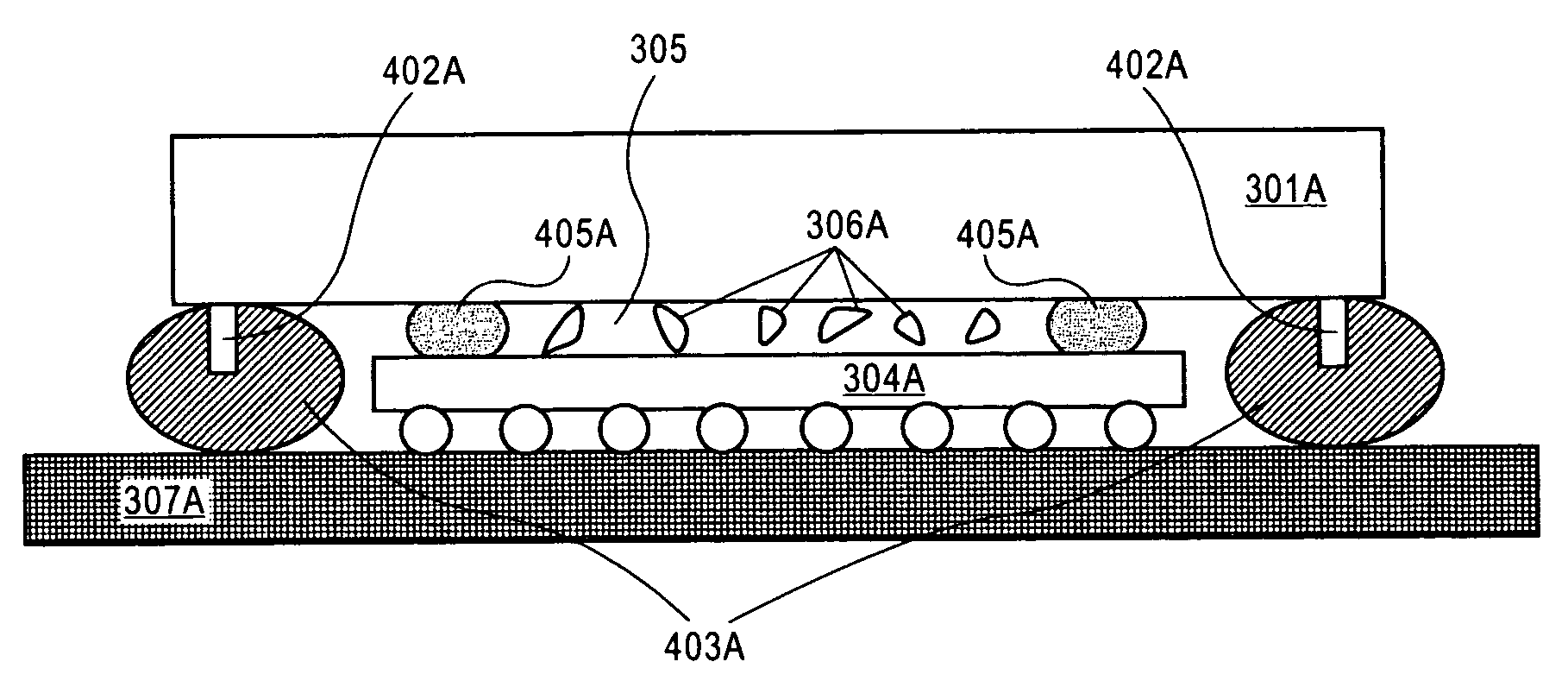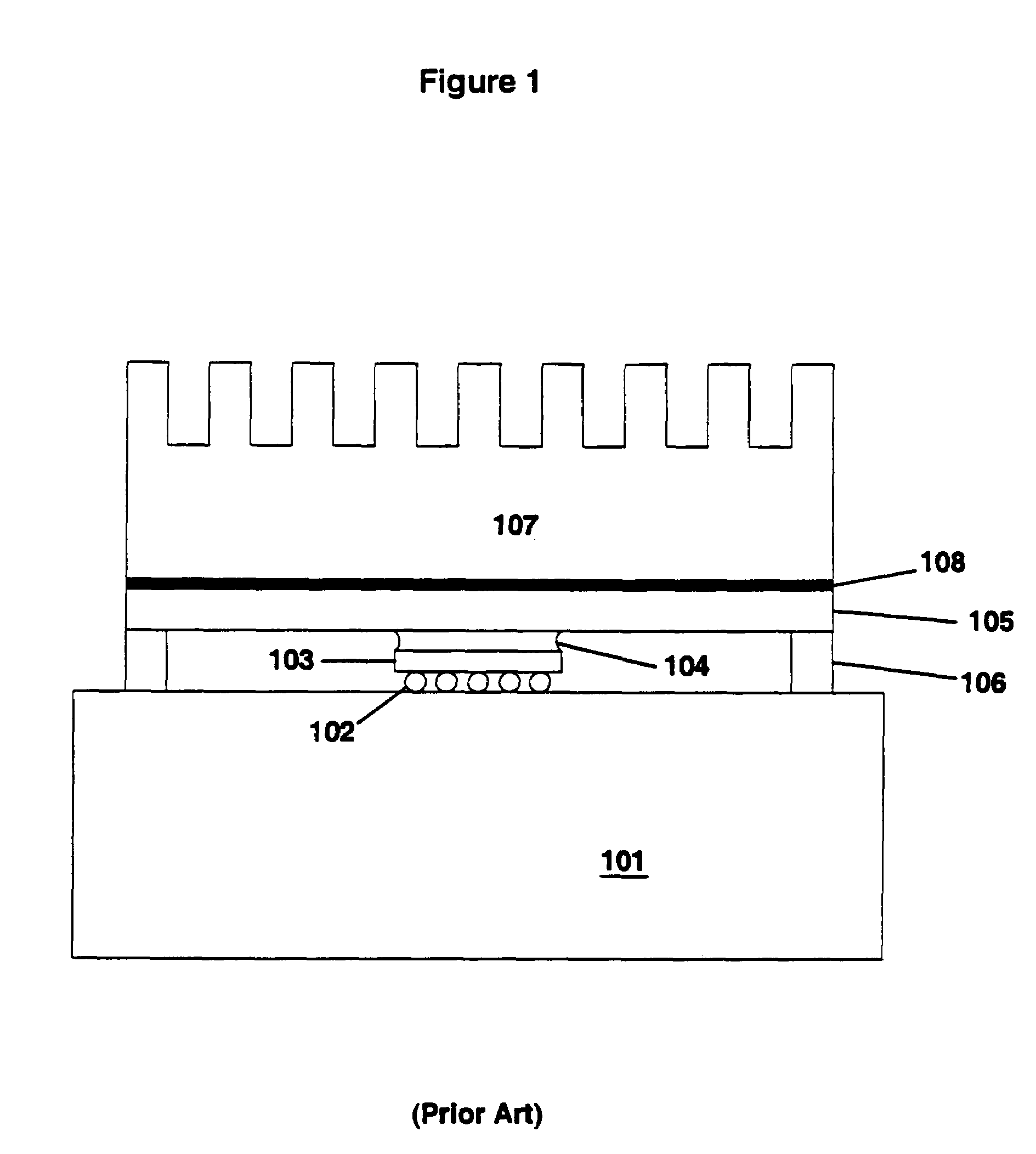Thermal heat spreaders designed for lower cost manufacturability, lower mass and increased thermal performance
a heat spreader and heat dissipation device technology, applied in the direction of cooling/ventilation/heating modification, semiconductor/solid-state device details, semiconductor devices, etc., can solve the problems of increasing the density of the circuit in the device, reducing the reliability and performance of the device, and adding excess weight and cos
- Summary
- Abstract
- Description
- Claims
- Application Information
AI Technical Summary
Benefits of technology
Problems solved by technology
Method used
Image
Examples
Embodiment Construction
[0024]An improved apparatus for spreading heat from a packaged integrated circuit is described. In the following description, numerous specific details are set forth such as material types, dimensions, etc., in order to provide a thorough understanding of the present invention. However, it will be obvious to one of skill in the art that the invention may be practiced without these specific details. In other instances, well-known elements and processing techniques have not been shown in particular detail in order to avoid unnecessarily obscuring the present invention.
[0025]A heat spreader, comprising a metal body with attached standoffs located approximately above the integrated circuit, is described. The standoffs should improve bond layer thickness control between the integrated circuit and the heat spreader, leading to a lower cost and lower mass package, as well a more reliable device with increased thermal performance.
[0026]This discussion will mainly be limited to those needs a...
PUM
 Login to View More
Login to View More Abstract
Description
Claims
Application Information
 Login to View More
Login to View More - R&D
- Intellectual Property
- Life Sciences
- Materials
- Tech Scout
- Unparalleled Data Quality
- Higher Quality Content
- 60% Fewer Hallucinations
Browse by: Latest US Patents, China's latest patents, Technical Efficacy Thesaurus, Application Domain, Technology Topic, Popular Technical Reports.
© 2025 PatSnap. All rights reserved.Legal|Privacy policy|Modern Slavery Act Transparency Statement|Sitemap|About US| Contact US: help@patsnap.com



